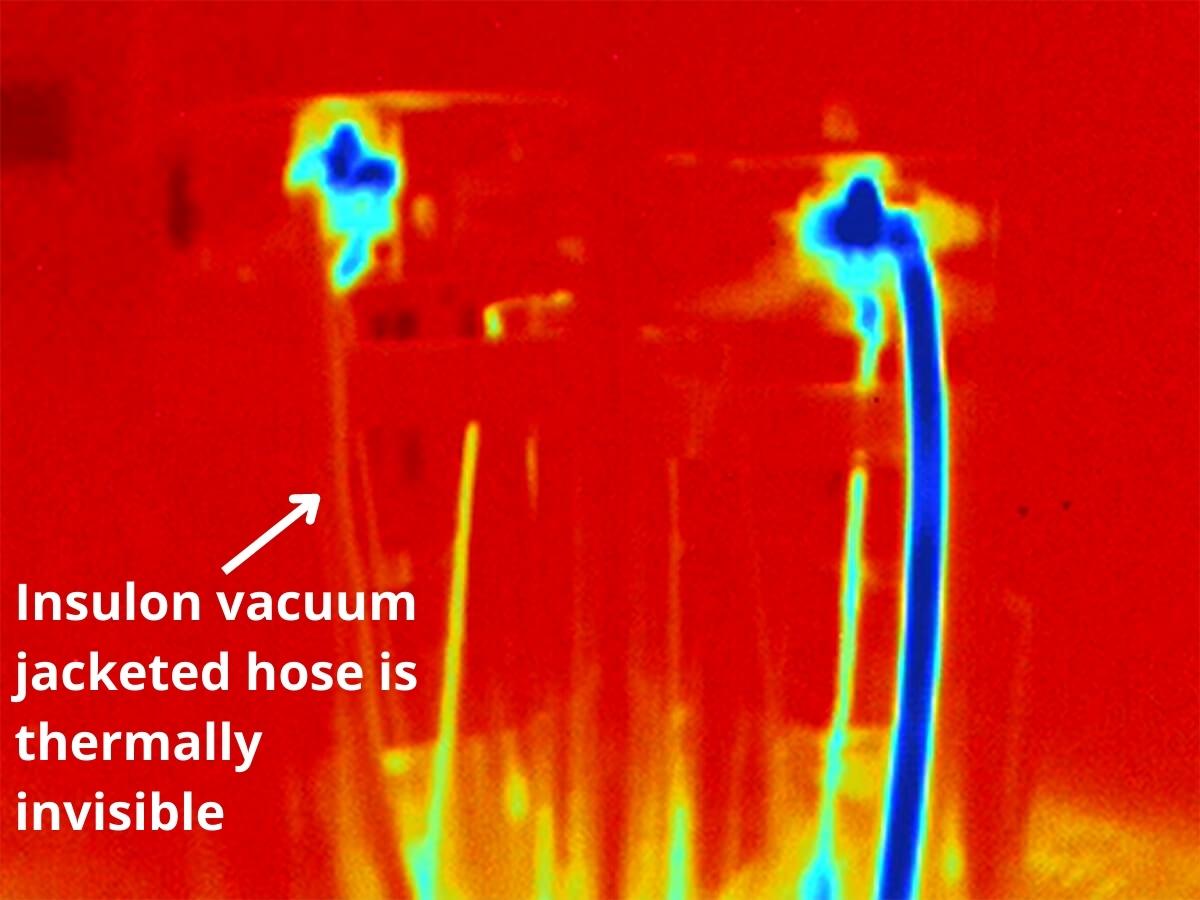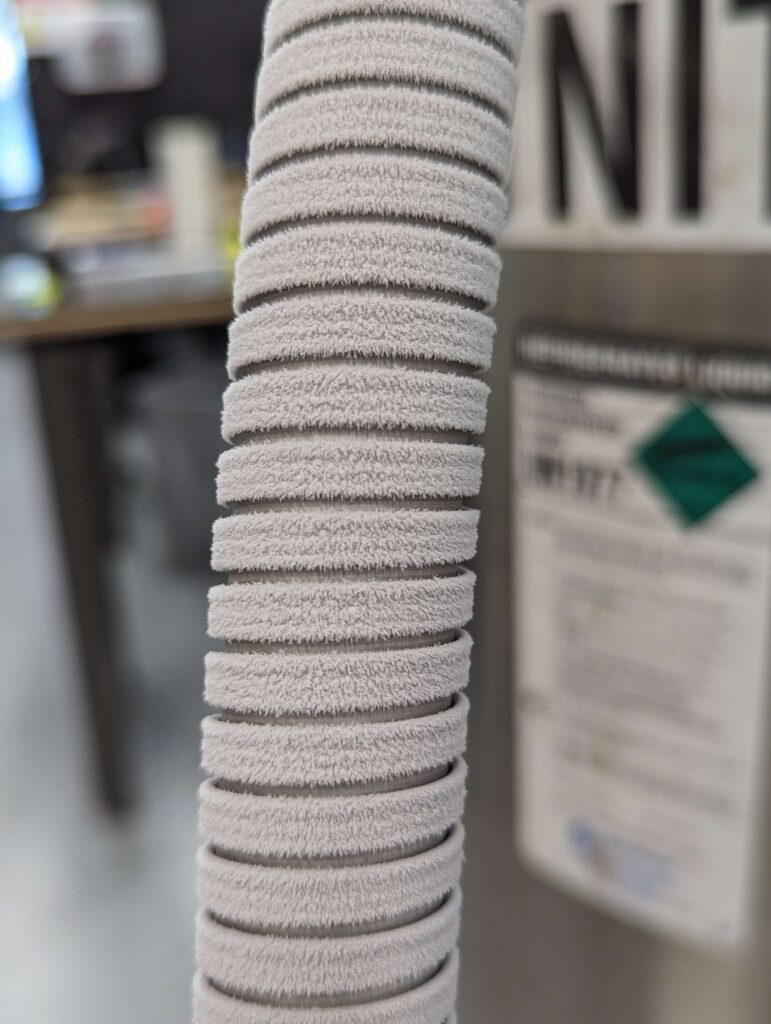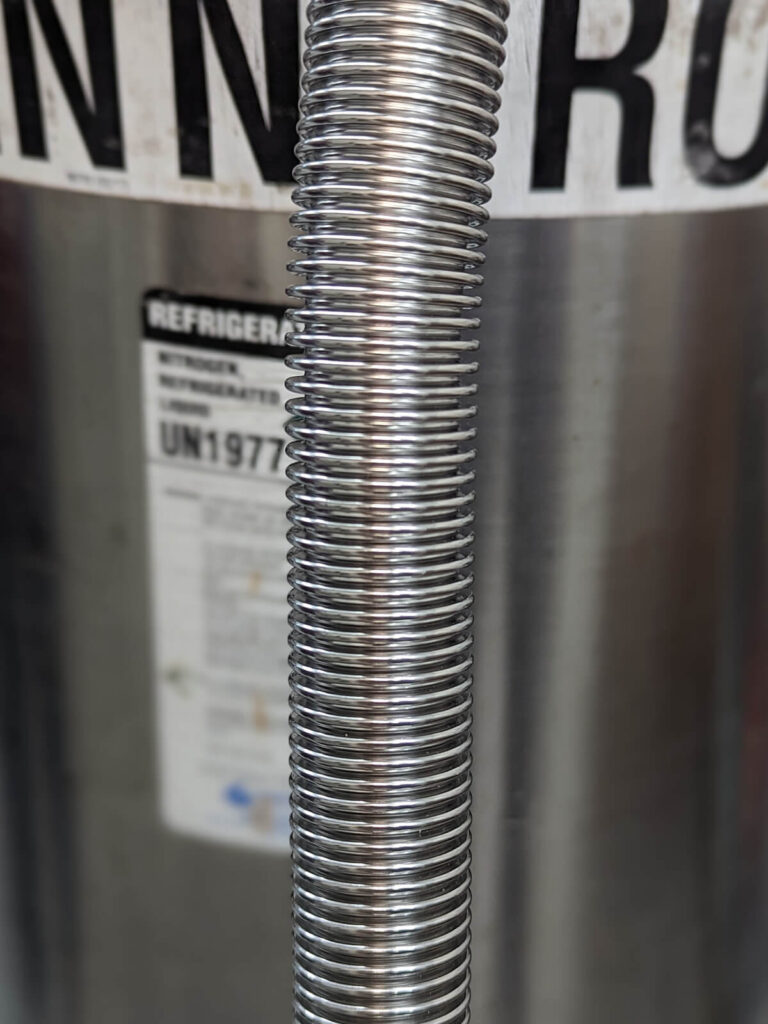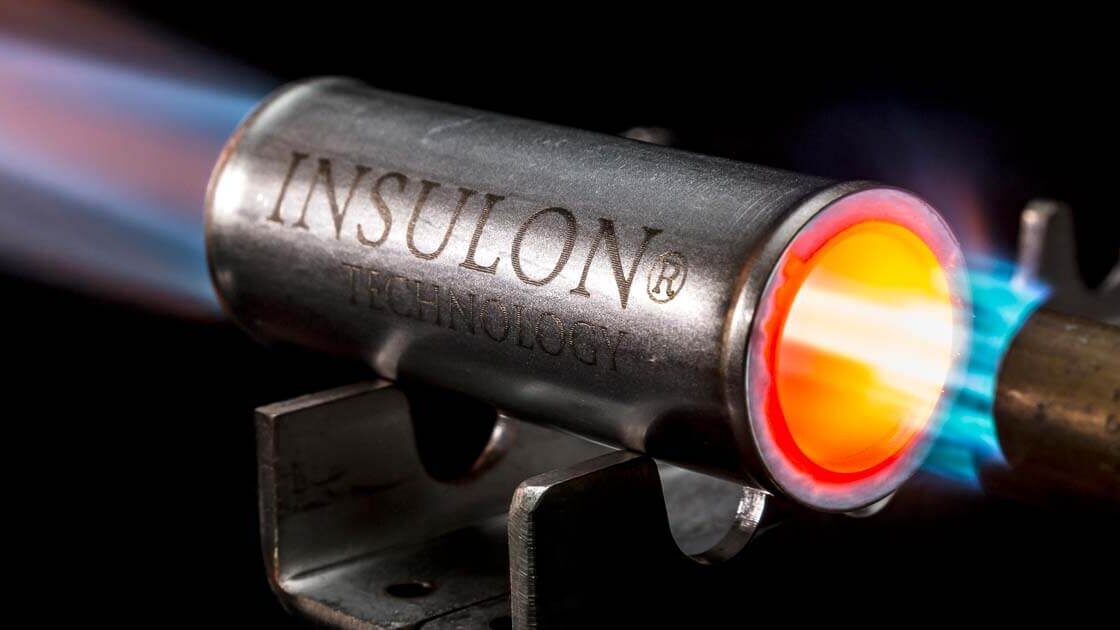At first, cryogenic hoses and vacuum jacketed hoses may look like very similar products. They are both used to transfer cryogenic fluids including liquid nitrogen, carbon dioxide, argon, oxygen, and hydrogen. Both types of hoses are typically made with corrugated stainless steel tubing.
Insulated vs. Non-Insulated
Although they are made with the same materials and are used for similar purposes, cryogenic transfer hoses and vacuum jacketed transfer hoses are significantly different products. The primary difference between vacuum jacketed hoses and cryogenic hoses is that vacuum jacketed hoses are insulated, while cryogenic hoses are non-insulated.


Cryogenic transfer hoses are single-walled, flexible tubes that do not provide thermal insulation. Vacuum jacketed hoses are double-walled corrugated hoses. The air between the two hoses is evacuated, leaving behind a vacuum barrier. This vacuum barrier minimizes heat transfer, helping to reduce frost and condensation while conserving cryogenic materials.
What are the benefits of cryogenic transfer hoses?
The benefit of cryogenic transfer hoses is that they are made with materials that are compatible with cryogenic temperatures. If a non-compatible hose is used with cryogenic liquids or gases, the hose is likely to freeze, crack, otherwise become unusable, or even pose a safety risk.
Performance vs. Price
Because cryogenic transfer hoses are single-walled and non-insulated, they are typically available at lower prices than insulated hoses, including vacuum jacketed hoses. However, cryogenic liquids are expensive materials to source and transport. Non-insulated tubing can cause significant amounts of material to be lost to boil-off. Although single-walled cryogenic hoses may seem inexpensive at first, they may result in a thermally inefficient system that ultimately incurs higher material costs.
What are the benefits of vacuum jacketed hoses?
Vacuum jacketed hoses are generally considered to be the most thermally efficient transfer hoses for cryogenic systems. They deliver high performance insulation that has a range of benefits, including:
- Maintaining safer external surface temperatures
- Reducing frost and condensation
- Reducing the risk of mold and corrosion
- Conserve valuable cryogenic materials by minimizing boil-off losses
Safer external surface temperatures
In addition to reducing condensation and improving cleanliness, vacuum jacketed hoses can also improve safety. Cryogenic fluids are powerful substances that can be dangerous. Skin exposure to cryogenic temperatures can result in “burns” that kill live tissue on contact. (If you’ve ever had a wart “frozen off,” then you will have experienced this phenomenon.) Vacuum jacketed hoses provide thermal insulation, helping to maintain safer external touch temperatures.


Reducing condensation, corrosion, and mold
Double-walled, vacuum jacketed hoses consistently deliver better thermal performance than single-walled cryogenic transfer hoses. For those in the vicinity of the hoses, many of the improvements are visible to the naked eye. The first thing you might notice would be the absence of condensation and frost on the external surface of the vacuum jacketed hose. With single-walled cryogenic transfer hoses, frost collects quite rapidly, resulting in the accumulation of moisture that may even start to drip onto the floor or onto other nearby equipment.
Condensation poses a persistent problem for many cryogenic applications. In addition to making a a bit of a mess, the accumulation of water can lead to more serious problems. For example, an increase in moisture can subsequently increase the risk of both mold and corrosion. Vacuum jacketed hoses significantly reduce condensation, thereby reducing the overall accumulation of water and ultimately reducing the risk of mold and corrosion in the long run.
Reducing boil-off losses
Vacuum jacketed hoses can provide long term cost savings by reducing boil-off. “Boil-off” refers to the cryogenic materials that are lost to evaporation. They may freely evaporate from an open system, or escape through a pressure release valve in an closed system. Once they escape, these boil-off material losses are essentially impossible to recover. Instead, more cryogenic materials will need to be generated or purchased to replace the lost materials.
To prevent boil-off losses, cryogenic fluids must be kept near or below their boiling point, which can be extremely low. For example, liquid nitrogen begins to boil into a gas at -196°C (-321°F). As you can imagine, these demanding thermal requirements can make cryogenic fluids expensive to generate, transport, and store. High-performance insulation is required to design a thermally efficient cryogenic system that minimizes boil-off material losses.
Vacuum insulation has been known as a reliable cryogenic insulator for many years. (Sometimes, vacuum insulation also includes multi-layer insulation, also referred to as MLI or “super” insulation, for extra-high performance.) Although vacuum jacketed hoses may cost more upfront than single-walled transfer hoses, the reduction in boil-off material losses typically saves money in the long run.
Which one should I buy?
The decision to use cryogenic transfer hoses vs vacuum jacketed hoses can have a significant impact on your overall system performance. If you’re not sure which one is right for your application, it’s best to discuss your setup with a thermal engineer who can help.
Keep reading:

What does cryogenic mean?
The word “cryogenic” refers to extremely cold temperatures ranging from -150°C to -273°C. An environment is considered to be cryogenic when gases begin to liquify… Read more

Is vacuum insulation effective at high temperatures?
For years, cryogenic systems have benefitted enormously from vacuum insulation. According to NASA, “Cryogenic thermal insulation systems that incorporate a vacuum environment… Read more

